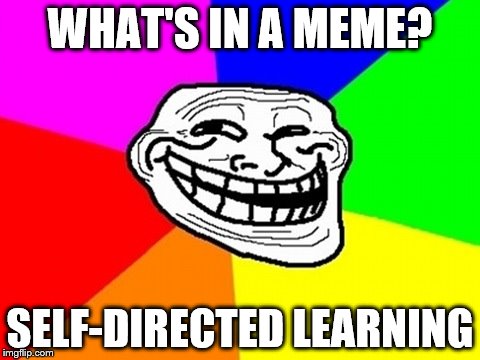I must admit when I embarked upon the study of adult learners and education I reduced a lot of the differences between adult and child learners to psychological and physiological differences. Adult brains are fully developed which should make understanding complex concepts a little easier. On the flip side of this, children can pick up on new lessons with relative ease as their brains are still developing. I think this is a common or popular view amongst people who have not studied or worked with adult learners. I quickly discovered this is a very limited view of the field.
Malcom Knowles is a much discussed writer in the field of adult education or andragogy. In his work, he outlines the characteristics and assumptions of adult learners. Unlike the popular view, many of these characteristics are not directly associated with psychological or physiological traits associated with adulthood. Most of these characteristics highlight the goals, self concept, roles, and experiences that adult learners bring to education. Further, unlike children who need to acquire a breadth of knowledge and education to use throughout their lives, adult learners are “problem centred” in that they seek education to fill some specific need or goal.
There is a plethora of information on the internet discussing the characteristics of adult learning and Malcom Knowles work. I like to connect theory to practise, so here is an interesting article applying Knowles’ characteristics to the customer support environment:
Six Characteristics of Adult Learners
.In this article, Matt McConnell outlines 6 characteristics of adult learning: the need to know, self concept, role of experience, readiness to learn, orientation to learning, and motivation. For each of these characteristics he applies this to a generalized role of customer support agent. I would like to take this one step further with specific examples from my experience.
The Need to Know
This characteristic assumes that adult learners need to know the ‘why’ or value of the learning opportunities.
In most customer service environments, new products, campaigns, or process are introduced to the team regularly. The need to know is vital for buy in and adoption by the team. For an example, if a new process is introduced to the team without explaining the need to know, often times this is met with resistance or even seen as an arbitrary introduction of a new rule from the top down. On the other hand, if you explain that this new process will reduce call volume or increase customer satisfaction, most agents will gladly engage in the training and adopt the new process easily.
Self Concept
This characteristic highlights the assumption that adults are autonomous beings that can make their own choices and self direct in learning.
This can be a tricky characteristic to apply in the workplace, as often times training is required for day to day business. In the customer support environment, while there is a certain level of required training, it is common to see elective training programs. These include self directed learning opportunities to become a product matter expert or different certification programs. These programs allow agents to choose to learn as much, as little, or even directed in specific skills sets that interest them.
Role of Experience
This assumption acknowledges that adult learners approach learning opportunities with different backgrounds and goals, which influences not only what they want to learn, but also how they learn.
In the customer support environment, experiential learning is one of the primary training methodologies. New hires often ‘job shadow’ a senior representative to understand the types and how calls are handled. This is then applied and compared to their previous experiences. Another common opportunity is projects where agents get to work with other departments on broader company initiatives. These give agents the opportunity to compare and contrast their experiences and perspectives with others.
Readiness to Learn
This characteristic assumes that adults are more attune to learning opportunities that they can apply to real life situations.
In the customer support environment, these opportunities are frequent. Coaching via case or call recording is one of the most frequently used learning opportunities. In this situation, an agent would listen and discuss how they handled a specific call with a coach or manager. While the coach or manager may offer feedback on areas for improvement, this is also a good opportunity for self evaluation.
Orientation of Learning
This assumption outlines how adults are “problem centred” learners.
While this is very similar to readiness to learn, I think this extends further to include a curiosity of learning. For an example, an agent may identify a ‘gap’ in knowledge or process on the team and actively seek for ways to learn more and fill in this gap or solve a specific problem.
Motivation
This characteristic outlines how adult learners are responsive to both external and internal motivators. Internal motivators are often the more powerful motivators.
There are tons of studies done on external versus internal motivators for performance. In the customer support environment, external motivators are very common in the form of individual and team incentives for reaching a goal. Internal motivators, I think are an industry weakness—one I have worked very hard to overcome in my own practice. Career development, opportunities to work on interesting projects, and informal leadership opportunities are often readily available in the support environment, which can easily garner interest and commitment to learning initiatives.
